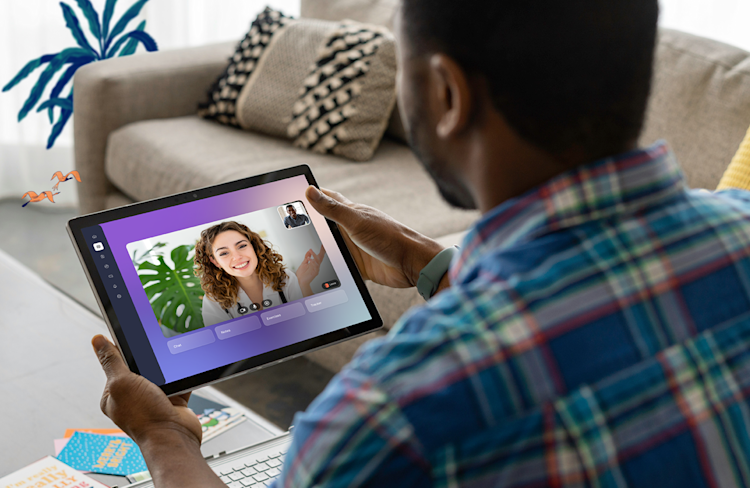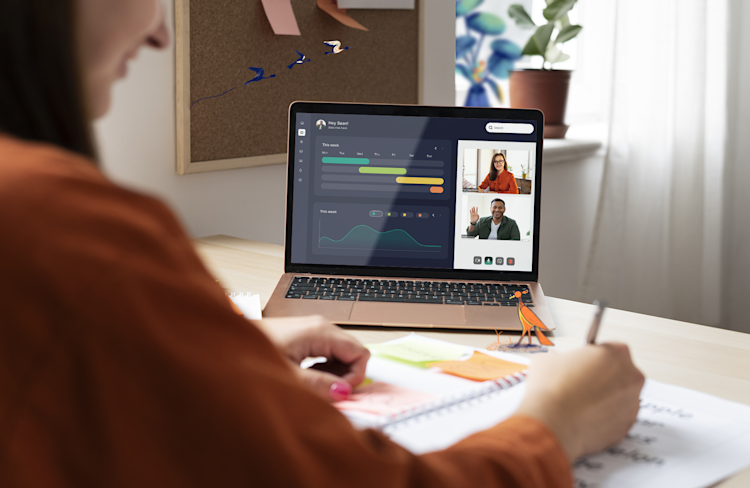Reimagining the Future of Healthcare: Key Takeaways from ATA Nexus 2025
At ATA Nexus in New Orleans, hosted by the American Telemedicine Association, we had the chance to connect with industry experts and hear from leaders and innovators. Read on for our key learnings from the conference.

This year’s ATA Nexus conference in New Orleans offered a thought-provoking and insightful look into the future of healthcare. Industry leaders, clinicians, tech experts, and visionaries gathered to confront the evolving role of digital solutions in care delivery, trust in AI, rural health disparities, and the rising importance of user experience. Below are our top takeaways from the event; lessons that are shaping the future of connected, compassionate, and tech-enabled healthcare.
1. Digital care is care
The term “digital care” is quickly becoming obsolete. Not because it’s less relevant, but because it is no longer a separate category. Like banking or shopping, the digital layer in healthcare is now simply part of the expected service.
David Guidry from Intermountain Medical Center emphasized the importance of using clear, outcome-driven language when talking about technology. When digital tools become the preferred option rather than just the accepted one, we’ll know we’ve reached true integration.
Digital solutions, like video consultations must be embedded into existing systems, not layered on top, so they feel seamless to both providers and patients. The ultimate success of “digitally enabled care” is when we no longer talk about it. It just becomes care.
2. Let’s reframe “AI” for what it actually does
AI is a headline-grabber and the buzzword of the moment, but in many clinical settings, it's already part of everyday workflows. From scribes and transcriptions to decision support, AI has long played a behind-the-scenes role. The challenge is the perception.
AI becomes less threatening, and more trustworthy, when it's described in terms of outcomes: improving efficiency, reducing cognitive burden, and giving clinicians back valuable time. As Philip Cheng from Henry Ford Health System aptly put it, “We’re building the plane as we’re flying it.” That’s why clinician-led AI use is critical to ensuring it's embedded with empathy and accountability.
3. Quality care goes beyond access
Equity, efficiency, and outcomes must be the lens through which we evaluate healthcare innovation. Access is foundational, but not sufficient.
Quality care must be measured consistently regardless of the delivery method—whether it's in-person or virtual. Having clear measures of success as well as providing sufficient training to healthcare staff will improve care quality and ensure accountability that goes beyond accessibility.
Leah Rosengaus from Stanford Health Care showcased training programs that help providers of all ages adapt to virtual care environments, proving that with the right support, even the most tech-averse clinicians can thrive.
4. Rural healthcare: a crisis and an opportunity
Nearly 25% of Americans live in rural communities, where they face significant health challenges. These include older populations, lower life expectancy, and unhealthy lifestyle habits, compounded by a shortage of healthcare workers, fewer hospitals, and limited insurance coverage. Despite these issues, rural areas also provide a frontier for impactful digital health innovation.
From telehealth in community spaces like schools and churches, to digital-first clinics and in-home visits supported by community health workers, the opportunity to deliver high-impact care is huge. But technology must reflect the social fabric of rural life, offering connection, not isolation. In many places, going to the clinic is more than medical care; it's a social lifeline.
AI can play a powerful role in bridging workforce gaps, but only with strong ethical guardrails and human oversight. Rural healthcare staff should be supported with training, documentation, and access to experts virtually to reduce the burden and ensure they are able to deliver quality, equitable care.
5. User experience: make it seamless or lose engagement
Technology only works when it works for people. That means fewer clicks for clinicians, accessibility-first design, and a deep focus on inclusion. From closed captions to simplified interfaces, user experience must be intentionally crafted.
Geriatric and wider populations are getting more savvy and comfortable with virtual visits but there is still a digital divide, and digital literacy shouldn’t be assumed.
As Brandon Welch, CEO of Doxy.me, noted: “If you want a patient or provider not to use a product, make it complicated.”
This isn’t just about patients. Clinicians, therapists, and administrators all deserve intuitive tools that reduce their cognitive load—tools that are bought or built not for novelty, but for need.
Hospitals and providers shouldn’t be adverse to partnering with and using external technology rather than trying to build the entire telehealth stack themselves. They need to find the right tools for the right situation. For example, integrating healthcare focused video call technology ensures a high-quality, user-friendly experience while reducing the workload for IT and Engineering teams.
6. Trust must be built: deliberately and continuously
Both patients and providers must feel the value of technology. For healthcare leaders, this means showing ROI early and often, through tailored metrics that reflect real-world impact. Sometimes, this starts with small wins: a nurse getting a lunch break or a patient finally feeling heard.
Reducing friction, listening closely, and adapting quickly are non-negotiables. Trust isn’t a launch metric; it’s a living outcome.
7. Virtual nursing: beyond the buzzword
Virtual nursing is gaining traction as a model for relieving burden and improving care. But the terminology itself matters and can cause confusion. As Ethan Booker from MedStar Health put it: “They are a nurse. Doing their work virtually.” Patients deserve clarity. The nurse is real, their location is just different.
For virtual nursing to succeed, the tech must be reliable, the experience personal, and the workflows designed with empathy. It’s not about replacing presence, it’s about reimagining how and where care happens, while keeping the humanity intact.
According to Brandi Bryan, VP Clinical Services at Advent Health, we need to find ways to harness tech to give nurses time back and help them to do their jobs better and more efficiently. We need to consider documentation, guide patients pre, during and post care and break down healthcare silos.
The road ahead
ATA Nexus 2025 painted a clear picture: the future of healthcare is focused on better integration, deeper empathy, and unrelenting focus on outcomes. At Whereby, we’re proud to be part of this transformation by partnering with healthcare innovators to build tools that are simple, inclusive, and designed around the people who use them.
Ready to integrate user-focused video calls into your telehealth solution? Take a look at Whereby Embedded, our video call API and sign up now.


